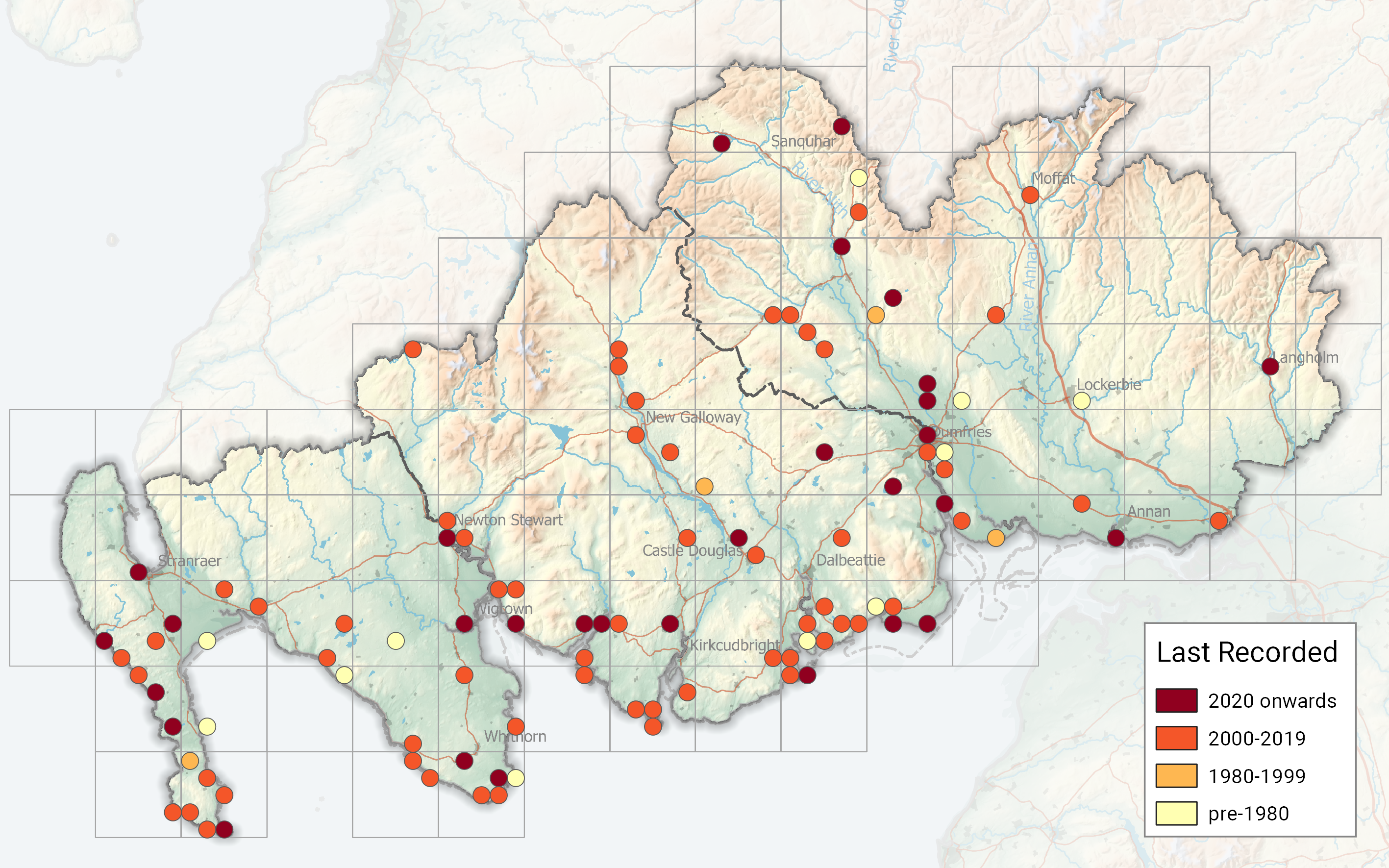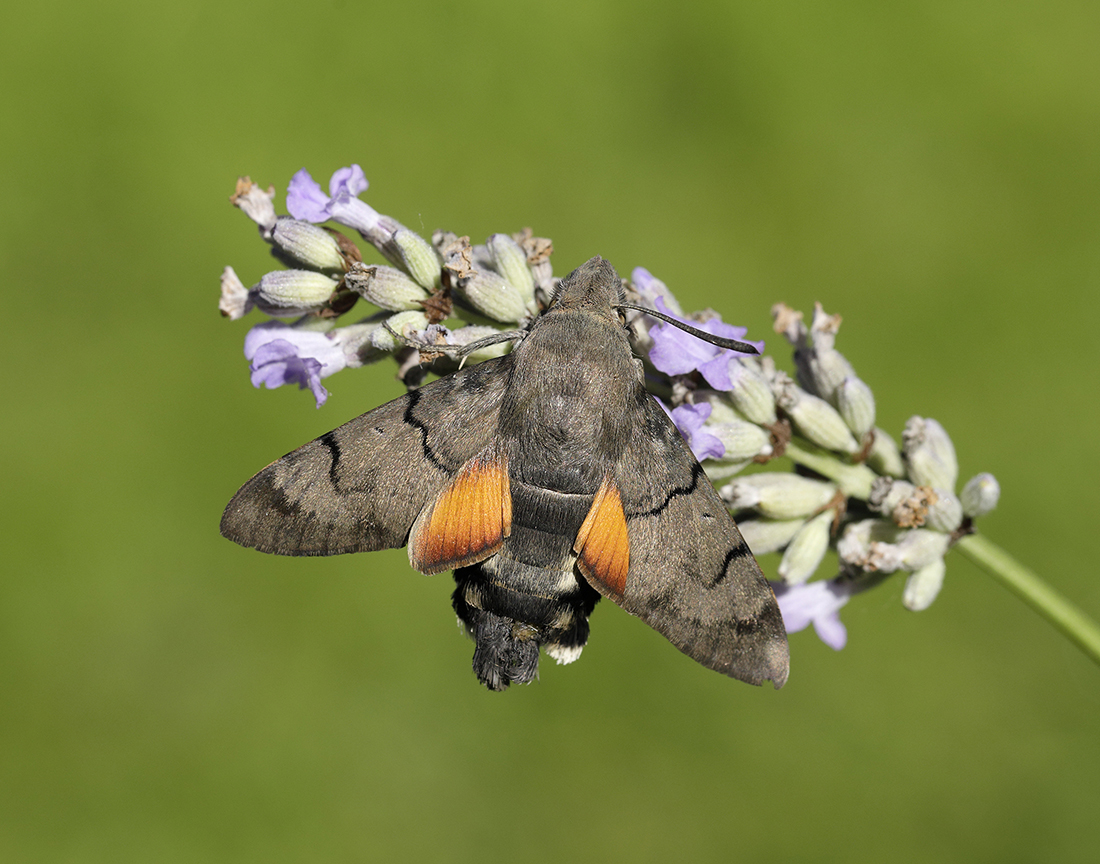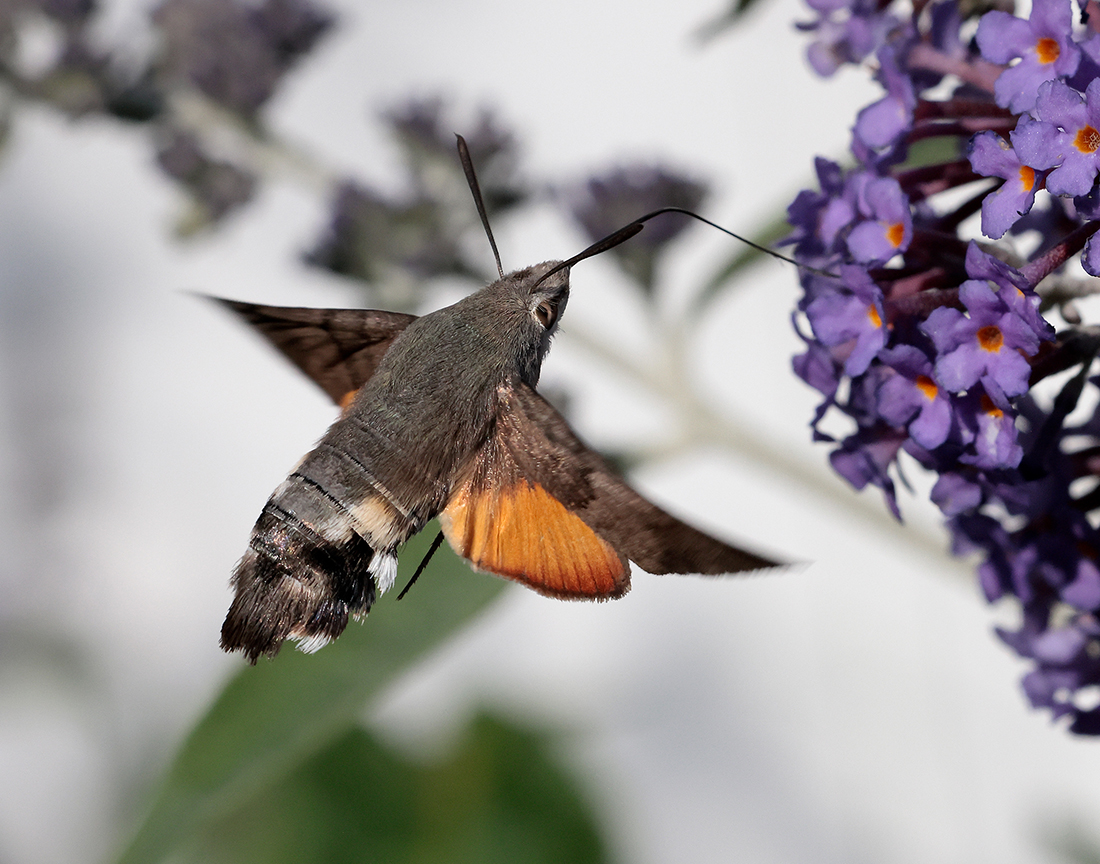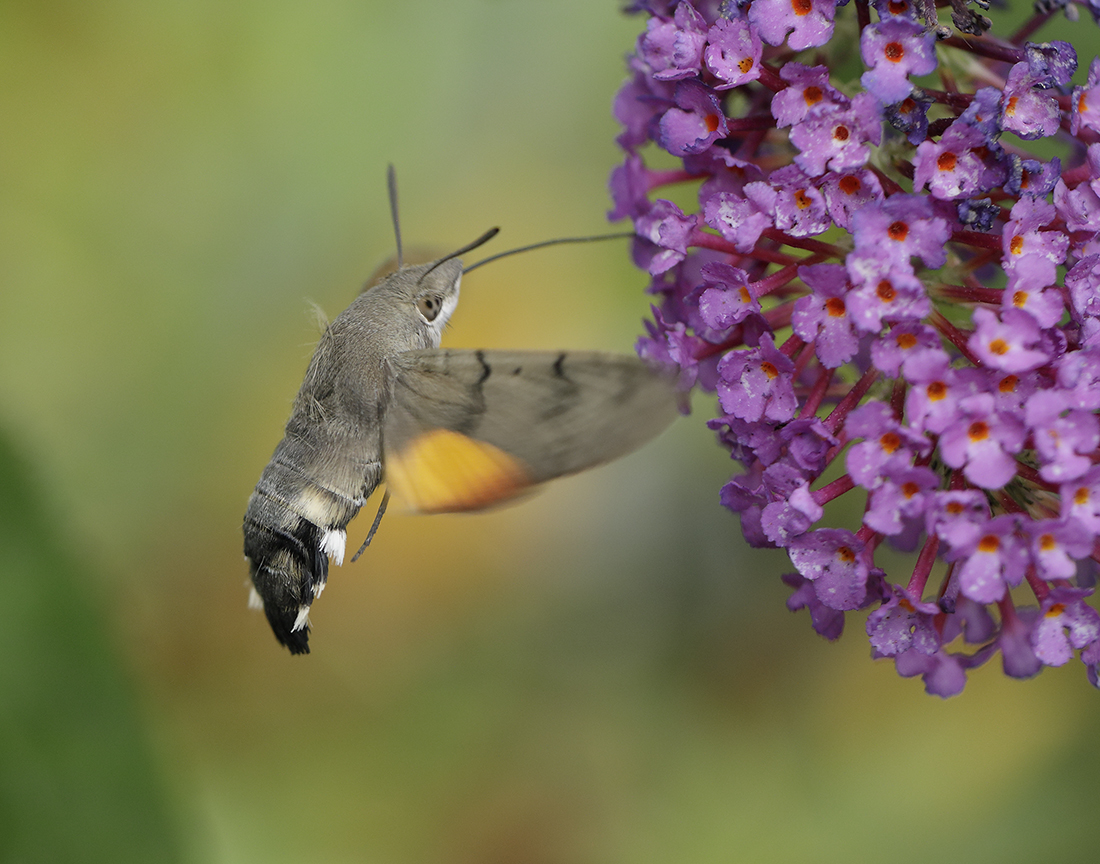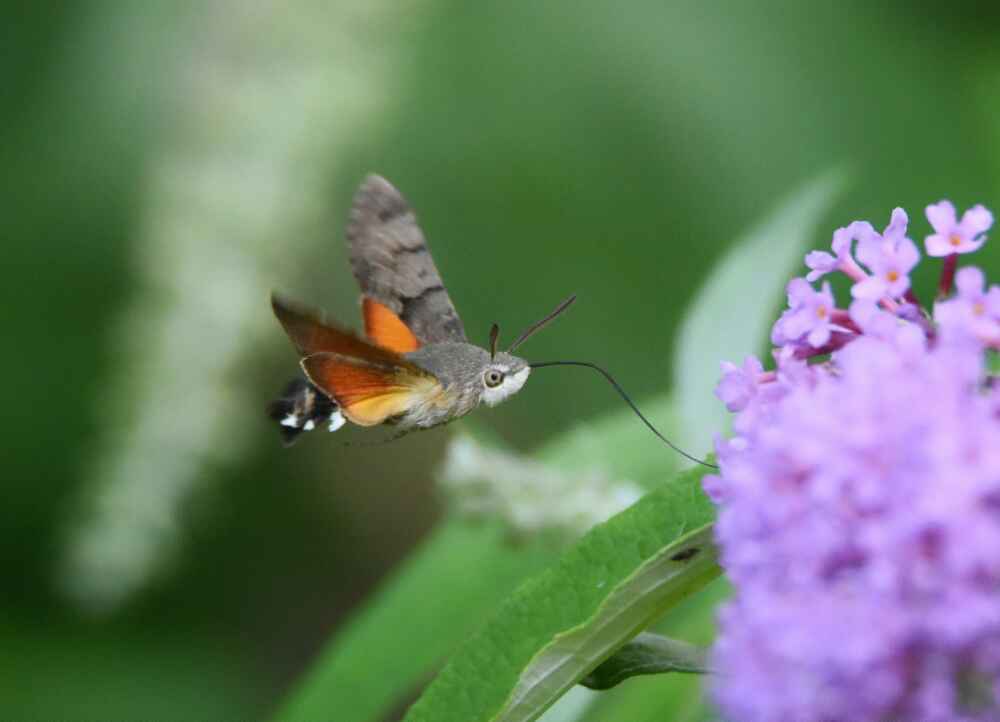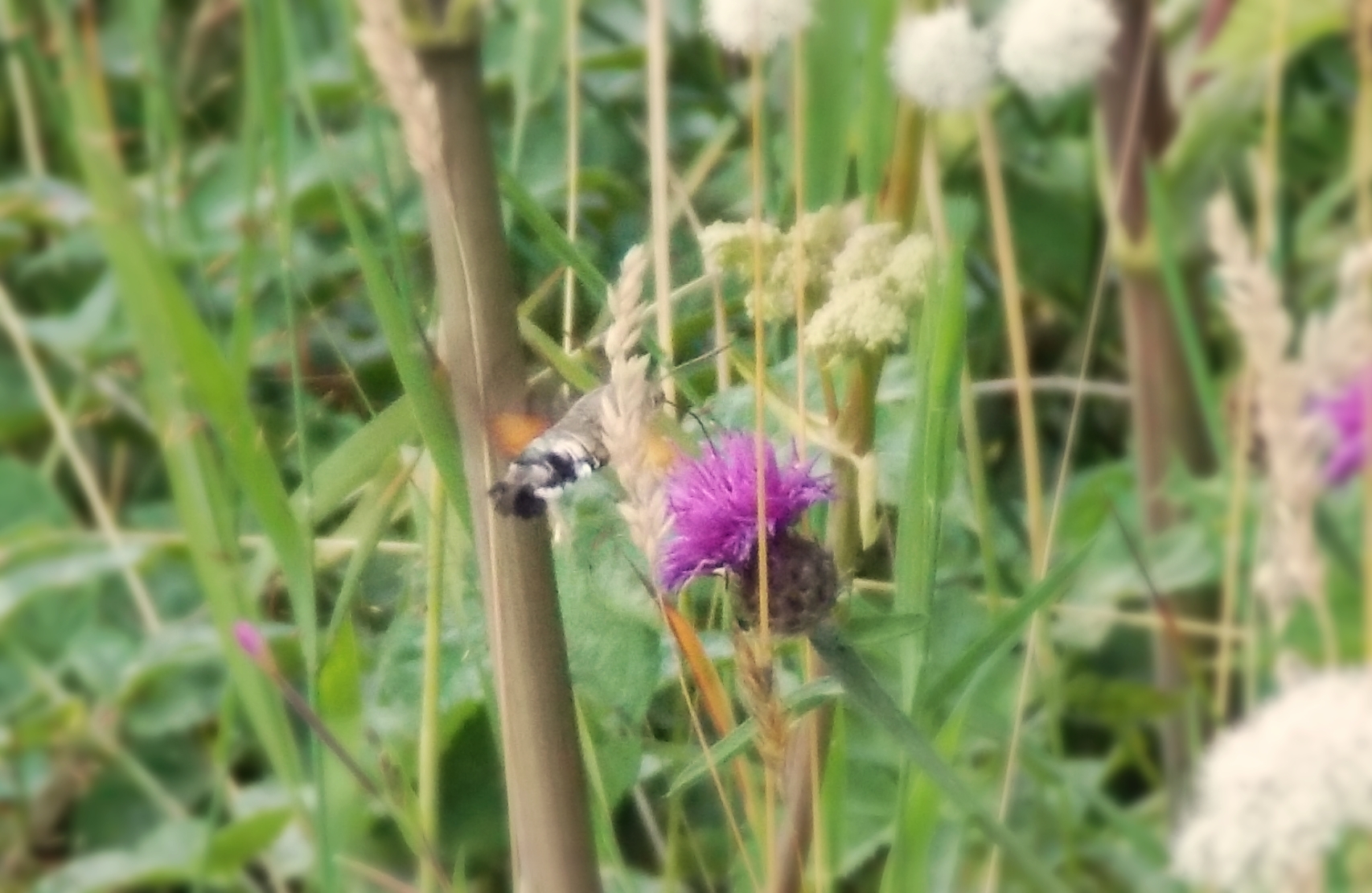Identification
This moth from southern Europe and north Africa, as its name suggests, resembles a hummingbird as it hovers and feeds at plants, giving off a buzzing noise from the rapid action of the wings. Whilst hovering, the warm greyish-brown forewings with orange-brown flashes in the hindwings will aid identification.
Recording Method
Active by day in sunshine, nectaring and flying rapidly between flowers such as buddleias.
Life cycle
Larvae are to be found mainly in August, but can be from June to October.
Larval foodplants
Larvae feed on wild bedstraws.
Habitat
Adult moths, though they can be found in most habitats, are most frequently seen at garden flowers.
History
The earliest record is from Lennon (1863) who had found it at his work place, the Crichton Institution garden. Douglas Robinson (1870-71) had found one larva in September 1870, on Almorness (VC73). K. J. Morton of Edinburgh (1900) whilst on a visit in July 1899 to Wigtownshire had found this species in the Monreith area. Gordon (1913) stated that it used to be fairly common, usually at rhododendron flowers, but had not been seen lately. All his records were mostly Victorian, three being seen on one shrub in June 1899.
Seventy larvae on yellow bedstraw were found on 5th July 1933 near Gilchristland (VC72) by O. H. Wild. There were a further six sightings of the adult that year at coastal sites in Wigtownshire. During 1945-49 another five occurred, one in Mabie Forest, three at the coast (VC73) and one on the Isle of Whithorn (VC74). Sir Arthur Duncan (1909-84) during his lifetime had found it at Closeburn (VC72) as had Olaf Pullen in 1945.
There was a long interval before the next two arrived, one in 1972 and one in 1975. Next record came on 26th July 1989 at Newton Stewart, followed by a further nine individuals in the 1990s.
During the 21st century, twenty occurred in 2000 from widely scattered sites across all three VCs, then two in 2003, four in 2004, seven in 2005, and an unprecedented 44 during 2006, with singles in 2008 and 2009.

